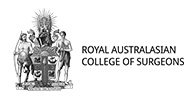What is Retzius-sparing Robotic Prostatectomy (RSP)?
Retzius-sparingroboticprostatectomy (RSP) is a new approach for treating prostate cancer by removal of the prostate gland. It is based off on conventional Robot-assisted laparoscopic radical prostatectomy (RALP) and is showing more advantages over RALP. In RSP, the cave of Retzius containing fat and connective tissue is spared as well as the puboprostatic ligaments. This preservation of more normal pelvic anatomy results in better continence outcomes and reduced bladder neck descent.
Features and Benefits of Surgery
The main advantages of RSP are:
- Faster return to continence in many men (although some men may still have some leakage).
- Around 70% of men are pad free within 1 month compared to 20-30% with the standard robotic technique.
- Often a suprapubic catheter placed through the abdomen is used to drain bladder after the surgery rather than having a catheter placed into the penis. The suprapubic catheter is more comfortable.
- It is a robotic procedure and so compared to standard techniques it is potentially more precise, and there is less bleeding and pain.
Preparation Before Surgery
In order to prepare for the surgery, the patient should be adequately counselled to ensure that the informed consent obtained is fully understood. The doctor then runs a number of tests to ensure that the patient is fit and in good health for the surgery. These will include blood work, urine analysis, PSA test, scans if needed and a thorough physical examination. The physician has to make the final call for eligibility based on examination and lab reports.
This is major surgery and the patient is advised not to eat anything for eight hours before the procedure. Some hospitals may keep the patient overnight before surgery the next day.
Steps in Surgery
The robot used in this surgery is called the Da Vinci robot. The doctor may show the robot to the patient before the surgery in order to relieve any associated anxiety and answer any related questions.
The surgical procedures include the following steps:
- An IV line is passed into the patient’s arm to push fluids as needed.
- The anaesthetist sedates the patient and monitors his vitals during the procedure.
- The surgeon operates the robot using controls.
- Keyhole incisions are made in the abdomen for the robotic arms and camera to allow the surgeon to see the internal view
- Once inside, the robot arms are manipulated to move various structures and organs out the way until the prostate gland is reached.
- The prostate tissue is dissected in sequence and the tissue removed. The Retzius cave is spared.
- A suprapubic catheter is placed temporarily for about 1 week as part of the healing process.
- The robot extension and camera are removed and the initial incisions are sutured.
- The patient is brought out of anesthesia and placed in post-operative care
Immediate Post Op
The patient is kept in the recovery room for observation and their vitals are monitored. NSAIDs and paracetamol are given for pain management. The patient is shifted to a room in a few hours, and he can begin to take liquids by evening. The patient can be discharged when they are able to move about, which usually happens in about three days.
Recovery After Surgery
Recovery after surgery requires keeping the wounds clean. Paracetamol can also be taken on an as per need basis. The patients are expected to return to normal life within 6 weeks.
Care plan
The doctor will devise a care plan for the patient and request follows up, several weeks apart. He will also request PSA tests for follow up.




